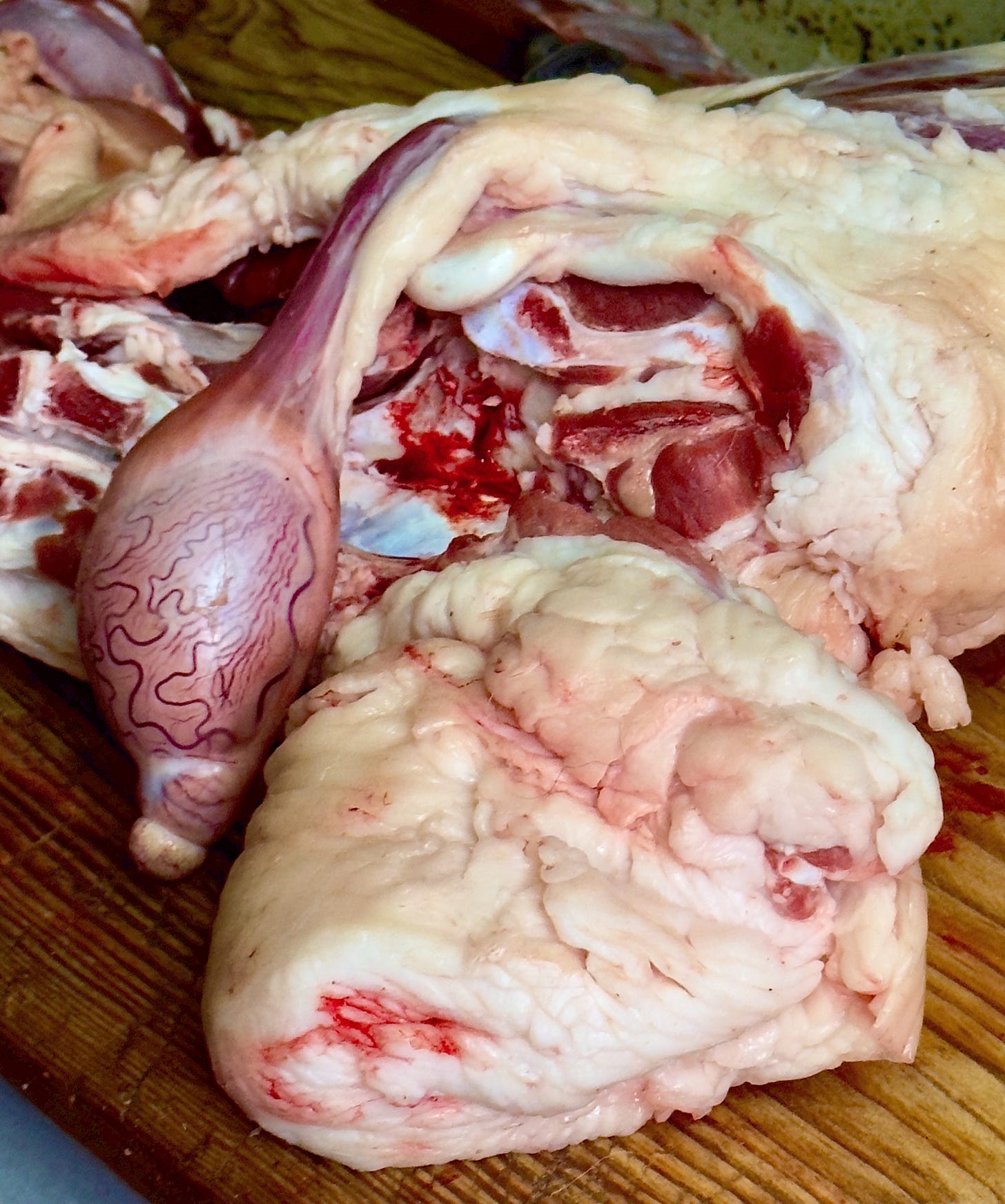Today is the the second day of Eid el-Adha, or the Feast of Sacrifice, one of two important feasts in the Muslim calendar — the other being Eid el-Fitr, celebrating the end of Ramadan. This Eid is to commemorate the willingness of Abraham to sacrifice his son Ishmael when ordered to do so by God. However, Iblis (Satan) tried to tempt him to resist but Abraham threw pebbles at him and resisted the temptation. God acknowledged this, and the Angel Gabriel sent a ram from heaven for Abraham to sacrifice instead of his son.
Because of this, all Muslims who can afford it will slaughter an animal, or more for Eid el-Kabir (meaning big feast) as it is also known. Bedouins will slaughter a camel, rural folks goats or sheep depending on what they are breeding and city folk will go to the live animal market to buy one or more sheep or goats to slaughter in their courtyard if they have one or to send to the butcher do it. Or they will go directly to the butcher to buy a whole lamb or cuts, depending on how large their family is, or how much they can afford to buy.
I remember one day when I happened to be in Aleppo during Eid and how when I turned a corner on a narrow alley of the old souk, I found a butcher slaughtering a lamb for a client. Almost the same happened the next day as I was driving through Damascus when I came across an ambulant butcher who was slaughtering several lambs hung on a rack set right on the pavement, which he had laid with a large plastic sheet. He then gutted them, before selling them whole or in parts to clients gathered around him.
The lambs in the picture below have their penises wrapped around the top of the leg to show they are male because only male sheep are appreciated in the Middle East — butchers also leave the testicles attached to the carcass or cuts (as in the following pictures) to show that the lamb is male.
Back home, the meat is divided into three parts, one for the family, the other for relatives and/or friends and the third for the needy. Charity is a big part of Muslim religion, a duty that is especially important during Ramadan and Eid. The faithful will always think of those less privileged and will make sure they donate to them, either in kind as in this instance or by giving out money to those needing it the most.
As for Eid, it is an occasion to first pray to God to thank him for his beneficence by reciting the takbir before donning new clothes and exchanging presents, both for adults and children. Families then gather to feast together, either on their own or with friends, on the meat that would have been prepared in different ways and other dishes and sweets of course.
Sadly, given the tragedies unfolding in the Middle East, many are unable to celebrate but for those who can, here is a recipe for the Emirati version of roast whole lamb or goat, one of the most festive dishes in the Arabian Gulf together with a recipe for b’zar, the Arabian spice mixture that is needed to season it. This one is the Qatari version I got from Qatar’s first TV chef and one of my favourite cooks there, Mariam el-Abdallah.
Keep reading with a 7-day free trial
Subscribe to Belly Dancer in the Kitchen with Anissa Helou to keep reading this post and get 7 days of free access to the full post archives.








